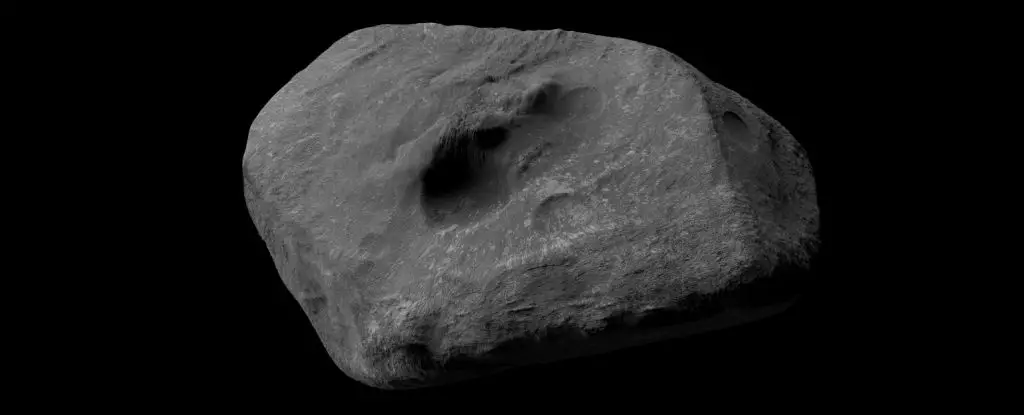When asteroid 2024 YR4 burst onto the astronomical scene on December 27, 2024, its appearance raised eyebrows among scientists and enthusiasts alike. This asteroid did not simply emerge from the vast emptiness of space; rather, it represents a fascinating case of celestial dynamics and gravitational interactions that speak to the very heart of our understanding of the Solar System. Astronomers have since confirmed that 2024 YR4 originated from the central region of the main asteroid belt, an area between Mars and Jupiter that was previously thought to be less likely to contribute to Earth-crossing asteroids. This knowledge upends previously held assumptions about where potentially hazardous asteroids might originate, compelling a reassessment of our observational priorities.
The Gravitational Dance: Jupiter’s Influence
At the very center of this cosmic mystery is Jupiter, the Solar System’s behemoth whose gravitational pull can either shield or displace objects within its vicinity. In the case of 2024 YR4, Jupiter’s gravitational influence propelled this asteroid toward Earth—a striking example of how planetary dynamics can shape our celestial neighborhood. This interaction not only highlights Jupiter’s role as a guardian but also its capacity to redirect, making it a paradoxical figure in the study of asteroid paths. The surprising origin of 2024 YR4 challenges astronomers like Bryce Bolin from Eureka Scientific, who remarked on the unexpected nature of such a find. This event exemplifies the intricate celestial ballet that dictates the orbits of these ancient rock formations.
Assessing the Threat: Alarm and Discovery
Initially hailed as a potential threat, 2024 YR4 captured the world’s attention and ignited discussions about planetary defense—the practice of developing strategies to protect Earth from hazardous objects. Initial observations suggested that the asteroid could venture into a close encounter with our planet during its next pass in 2032. Thankfully, the perceived threat was subsequently downgraded, only leaving the Moon as a possible target with a minuscule impact chance. Nevertheless, the wave of apprehension that surrounded its discovery underscores the persistent anxiety around “city-killer” asteroids: celestial bodies that, should they collide with Earth, could unleash untold devastation.
Scientists recognize the importance of these early warning systems, utilizing the knowledge gleaned from such events to improve rapid response techniques to new discoveries. How does one manage the two realms of fascination and fear when dealing with potentially life-threatening asteroids? The duality is intriguing; the same object that exemplifies the wonders of the universe also compels us to consider our vulnerabilities.
Mechanical Marvel: Characteristics of 2024 YR4
Following its initial discovery, astronomers like Bolin employed advanced observational technologies, including the W.M. Keck and Gemini South telescopes, to meticulously analyze the physical properties of 2024 YR4. This asteroid rotates in a retrograde direction every 20 minutes, showcasing an unusual flattened shape akin to that of a hockey puck, deviating from the more common potato-like forms seen in other asteroids. Its dimensions are estimated to range between 30 and 65 meters (98–213 feet), providing astronomers crucial information about its composition. The classification of 2024 YR4 as an S-type asteroid—denser and more homogenous than its carbonaceous counterparts—offers valuable insight into its structural integrity and formation mechanics.
This newfound data extends beyond curiosity; it is pivotal for devising potential impact mitigation strategies. The method of deflecting a threatening asteroid largely depends on understanding its composition and physical characteristics, making studies like this critical as humanity strives to safeguard our planet against cosmic threats.
Looking Towards the Skies: Future Implications
The study of 2024 YR4 is not merely an academic exercise; it illuminates a greater ambition in planetary defense. Its intriguing attributes provide rich material for ongoing discussions about the impending need for asteroid observation networks and global cooperation to mitigate risks. With advancements in technology, our ability to detect and assess new objects entering our vicinity will only improve. As we prepare ourselves for potential encounters with future asteroids that might materialize from the shadows of space, 2024 YR4 stands as a hallmark discovery—one that continues to encourage a proactive stance in planetary protection.
Additionally, the excitement surrounding 2024 YR4 sparks the imagination, underscoring the human desire to reach across the cosmos. As we unravel the secrets held within such asteroids, we not only deepen our understanding of the Solar System but also assert our place within it. The journey from discovery to comprehension forms an essential narrative as we navigate the complex relationship between humanity and the universe, one asteroid at a time.

